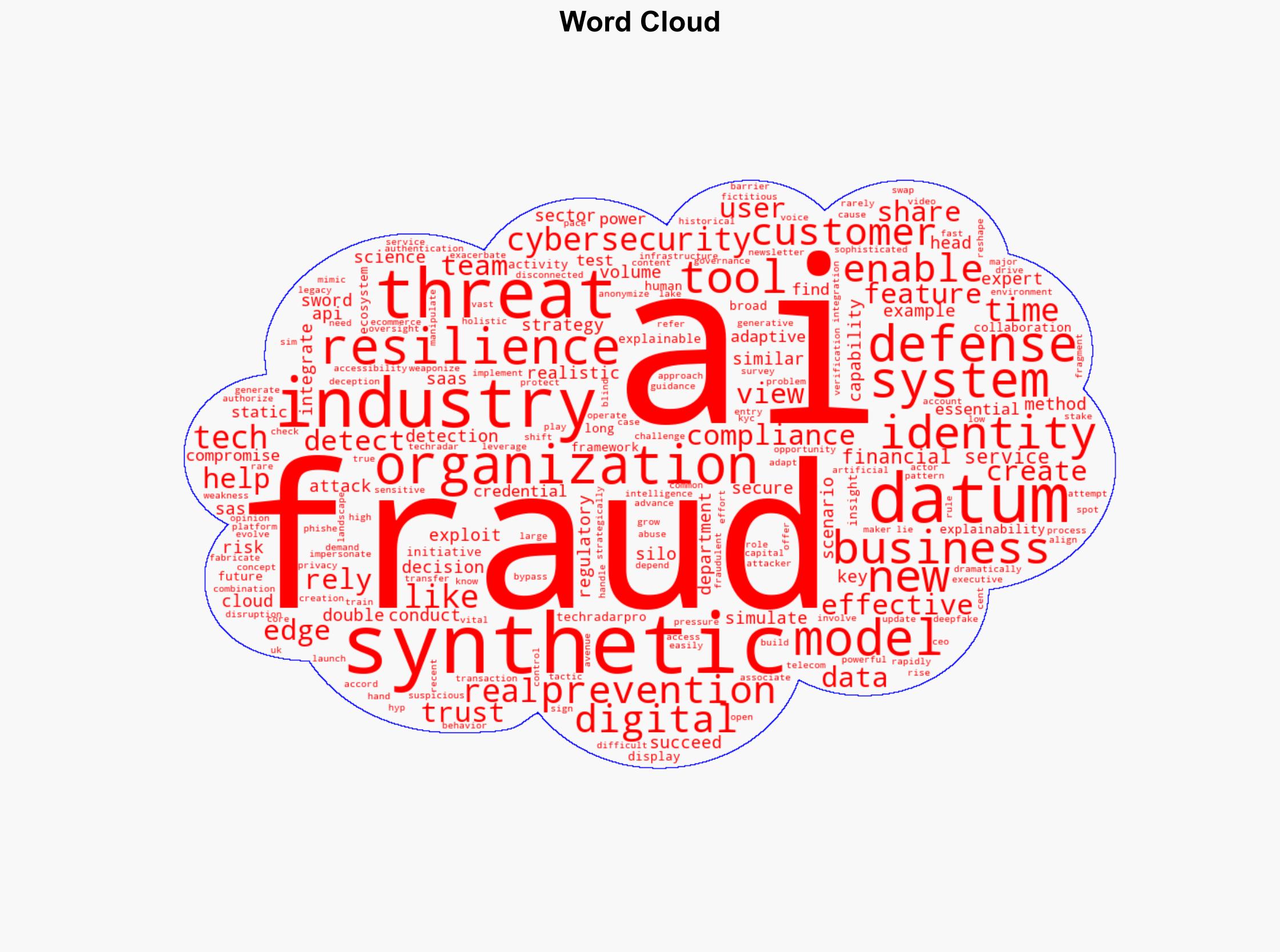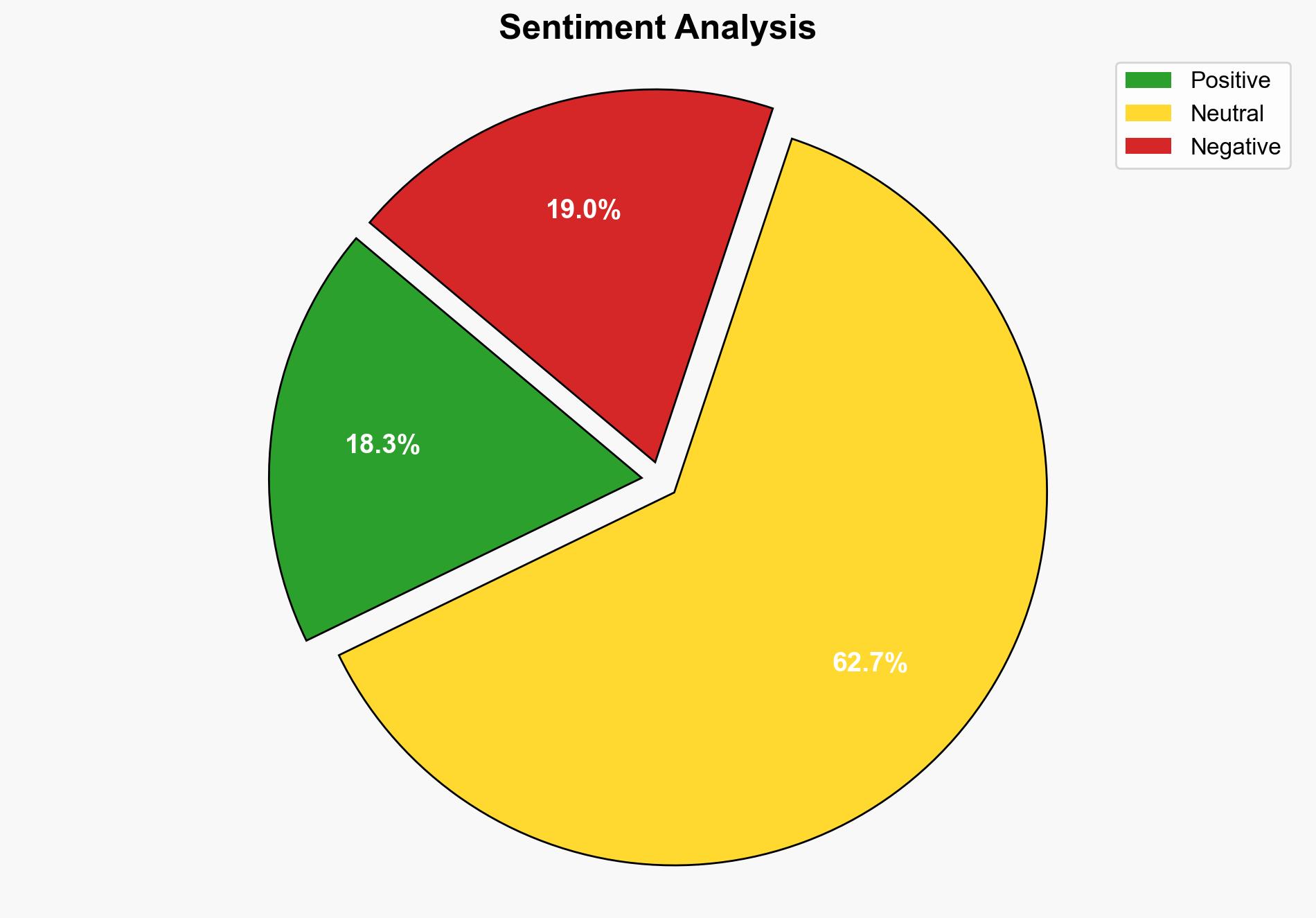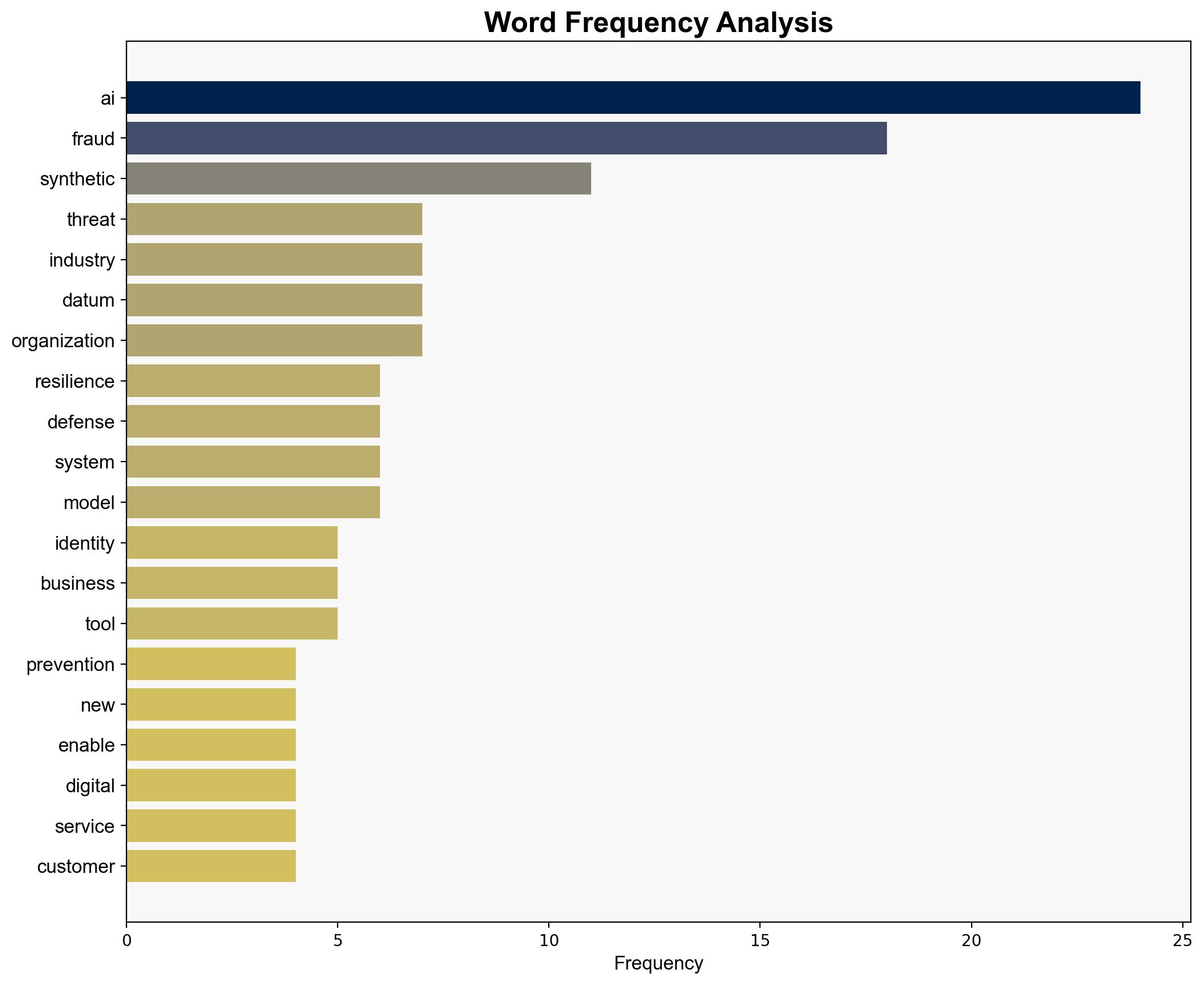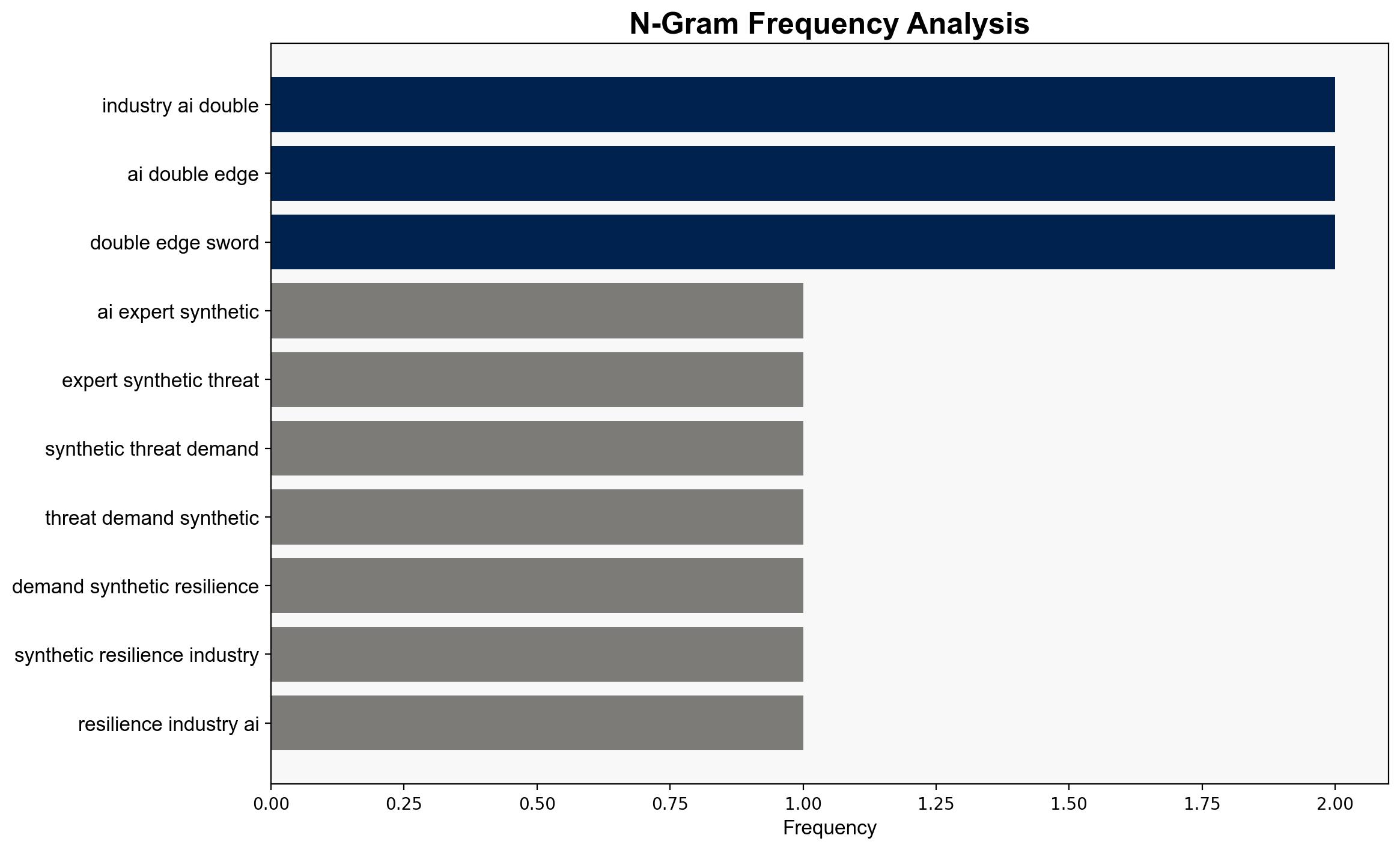I am an AI expert and here’s why synthetic threats demand synthetic resilience – TechRadar
Published on: 2025-08-12
Intelligence Report: I am an AI expert and here’s why synthetic threats demand synthetic resilience – TechRadar
1. BLUF (Bottom Line Up Front)
The most supported hypothesis is that the rise of synthetic threats, driven by advancements in AI, necessitates a comprehensive and integrated approach to resilience across industries. Confidence level: High. Recommended action: Develop cross-functional AI strategies that integrate cybersecurity, compliance, and fraud prevention efforts to mitigate synthetic threats effectively.
2. Competing Hypotheses
Hypothesis 1: Synthetic threats are primarily a technological challenge that can be mitigated through advanced AI-driven defenses and improved real-time verification methods.
Hypothesis 2: Synthetic threats represent a broader organizational challenge that requires not only technological solutions but also strategic alignment and collaboration across different business units and industries.
Using the Analysis of Competing Hypotheses (ACH) 2.0, Hypothesis 2 is better supported due to the emphasis on the need for integrated models and holistic views of user behavior, as well as the importance of cross-industry collaboration highlighted in the source.
3. Key Assumptions and Red Flags
Assumptions:
– AI capabilities will continue to advance, lowering barriers for threat actors.
– Organizations have the capacity to integrate AI strategies across departments.
Red Flags:
– Over-reliance on legacy systems may hinder effective AI integration.
– Potential underestimation of the speed at which threat actors can adapt to new defenses.
4. Implications and Strategic Risks
The increasing accessibility of AI tools poses significant risks, including the potential for widespread synthetic identity fraud and deepfake attacks. These threats could lead to financial losses, regulatory challenges, and erosion of customer trust. The fragmented nature of current defense systems increases vulnerability, necessitating a shift towards more cohesive and adaptive strategies.
5. Recommendations and Outlook
- Develop and implement integrated AI strategies that align cybersecurity, compliance, and fraud prevention efforts.
- Invest in real-time verification technologies and behavioral biometrics to detect anomalies effectively.
- Foster industry-wide collaboration to share intelligence and develop standardized defense mechanisms.
- Scenario Projections:
- Best Case: Successful integration of AI strategies leads to significant reduction in synthetic threats.
- Worst Case: Continued fragmentation and slow adaptation result in increased vulnerability to synthetic attacks.
- Most Likely: Gradual improvement in defense capabilities with ongoing challenges in coordination and integration.
6. Key Individuals and Entities
– TechRadar (source of analysis)
– SAS (survey conductor)
7. Thematic Tags
national security threats, cybersecurity, counter-terrorism, regional focus





